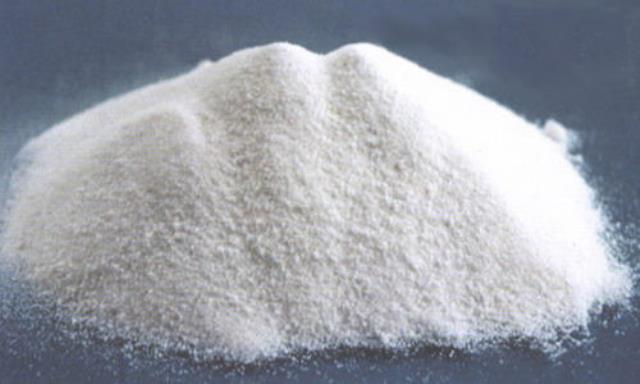It is possible to make up for the lack of this component in the soil with the help of organic fertilizer compounds - manure or compost. But this measure is not always sufficient, for this reason, many gardeners use additives of chemical origin. Potassium preparations help to prepare the plants for the winter season, accelerate the exchange process in the cells, change the soil composition. In this article we will talk about fertilizing the soil with potassium sulfate.
Table of contents
What is potassium sulfate
It is a yellow shade powder consisting of small crystals. The granules dissolve easily in water. In addition to potassium, the drug includes the following components:
- oxides of sulfur and iron;
- sodium;
- calcium.
All elements are capable of increasing plant growth and their level of yield.
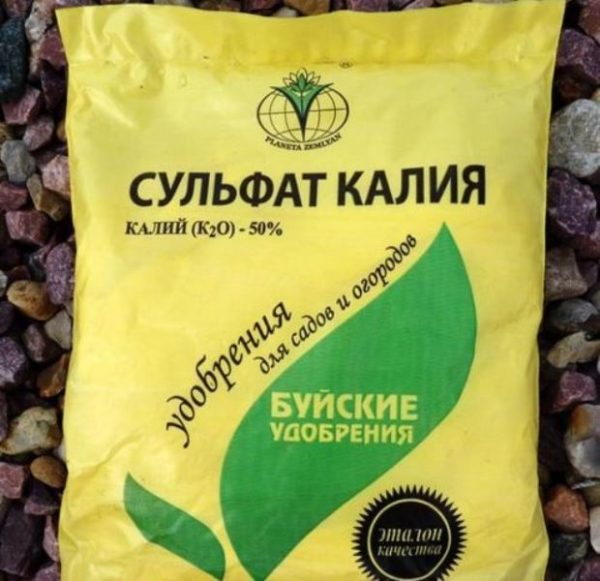
Potassium sulfate is considered the best fertilizer. Apply it to support those plants that do not tolerate chlorine. The composition is introduced both in spring and in autumn; it can be used during the vegetative period.
Fertilizer is obtained from minerals of natural origin - chenite and langbeinite. It can be used in greenhouses and open beds, introducing in dry form or in liquid.
What good potassium sulfate as fertilizer
Using this composition, you can solve many questions:
- the level of sugar and vitamin components in plants increases, their resistance to various kinds of diseases increases, the risk of infection of fruits with a core and gray decay decreases;
- significantly helps the substance to perennial plants, because it gives them the opportunity to remain viable by the end of the winter season.The top dressing structure perfectly influences trees and bushes during the autumn season. Even severe frosts they are not afraid;
- Potassium sulphate is excellent for crops that are most sensitive to chlorine. It is recommended to use fertilizer for cruciferous plants, since the chemical preparation is able to raise the yield index. In addition to cabbage and radish, the composition will support potatoes, beans, grape bushes and citrus plants;
- Improves the circulation of fluid in plants, ensures uniform and rapid distribution of nutrients. The root system develops, the green mass builds up;
- liquid fertilizers Excellent help grow crops, form new shoots.
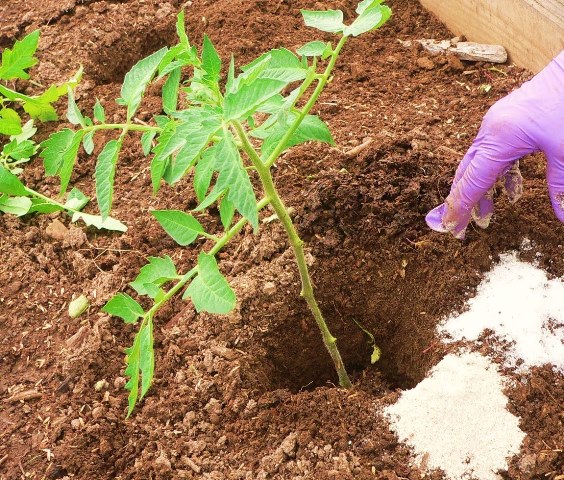
Properties and advantages of application in the garden
The main advantage of such a fertilizer composition is that with its help there is a rapid rooting and growth of young seedlings.
But it should be noted that there are disadvantages. In this case, we are talking about the compatibility of individual components that make up the fertilizer. It is believed that potassium is banned from simultaneous use with chalk and urea. The combination of fertilizing compounds with preparations containing nitrogen, is performed immediately before making the mixture.
There is another negative side - the drug is able to absorb magnesium, calcium, manganese and other trace elements useful to crops.
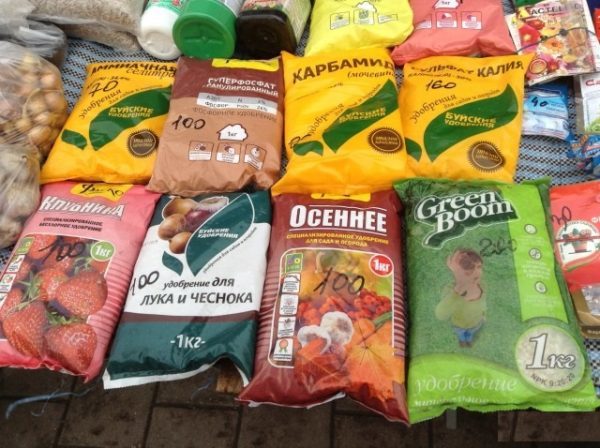
The use of potassium sulfate on different soils
On the introduction of fertilizer in the soil has a soil composition, plants grown in garden beds, their general condition. Potassium sulphate appears to be more useful on peatlands, to a lesser extent it should be applied on loams, because difficulties will arise in the penetration of the component into the soil.
On sandy, floodplain, peaty and red-earth sites it is possible to increase the yield, speed up the growth of crops and the forming of their main systems.
If, with a good level of humidity, potassium is used on black earth and loamy areas, it is possible to exert a beneficial effect on the growth of plants. But at the same time, it is necessary to carefully calculate the proportions and draw up a schedule for fertilizer application.
Potassium is not used for solonetz soil, as a rule, because there is enough salt in such a soil.
Calcareous areas are most in dire need of such an agrotechnical chemical.
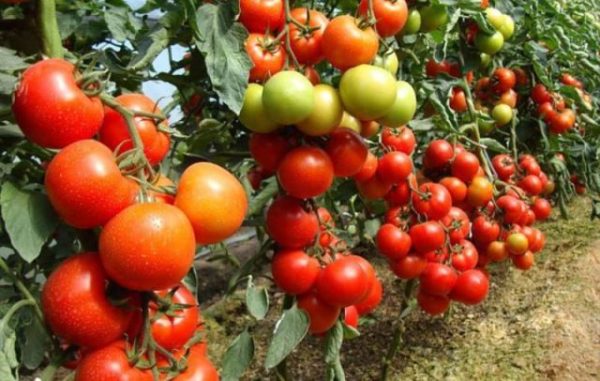
Often, potassium sulphate reserves should be replenished in beds with podzolic and peaty soils, because it is in these nutrient substances that make up a large deficit.
potassium sulphate is added to the black earth in those beds where plants are sown, which consume large amounts of sodium and potassium in the process of growth.
Lime is added to acidic sites along with potassium sulfate.
Compatibility with other fertilizers
Since potassium sulfate does not contain chlorine, it can have a beneficial effect on plants. But it is necessary to apply this drug correctly.
The work takes into account the following features:
- potassium is not used in combination with urea and chalk;
- if it becomes necessary to make a complex fertilizer composition, then it is necessary to mix potassium with nitrogen preparations in advance, before the fertilizer spreads over the soil layer;
- fertilizing acidic soil, it is necessary to combine potassium sulfate with lime.
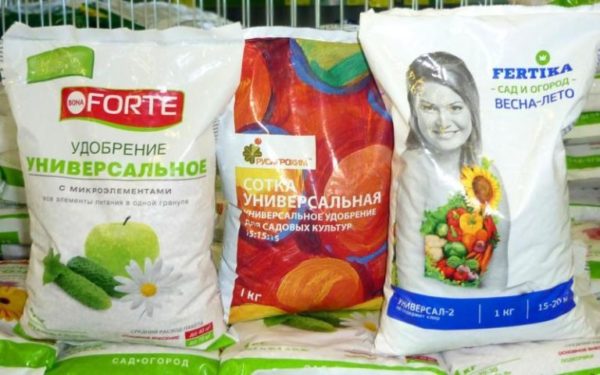
The best indicators from the use of potash are achieved on carbonate lands where grapes are grown.
Another successful combination is potassium sulfate and phosphorus. This combination gives you the opportunity to get maximum yields.
Table fertilizer consumption depending on the culture:
| Culture | Consumption, g / m sq. |
| Tomatoes, cucumbers, indoor plants, flowers on the site | 15-20 |
| Strawberry | 15-20 |
| Outdoor crops | 30-40 |
| Cabbage, potatoes, carrots, beets | 25-30 |
| Fruit trees | 150-200 g per one landing pit |
Storage and Precautions
It is possible to use this fertilizer composition not only in small personal plots, but also in the fields. Transportation of the drug does not cause difficulties, because it is not considered explosive. It should also be noted that the tool does not apply to flammable, even though it contains a certain amount of sulfur.
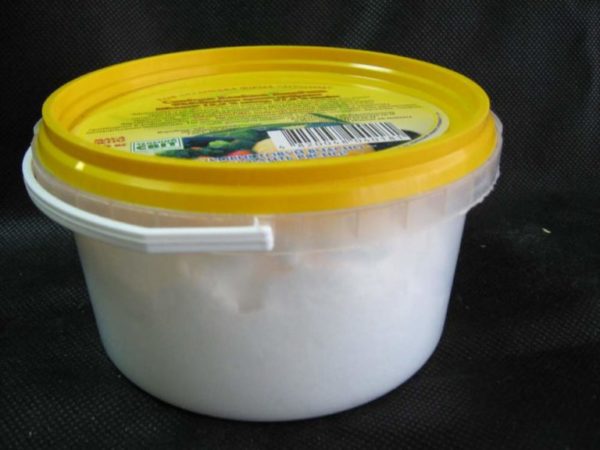
The main requirement in the organization of storage - protection from high levels of humidity, dust, water and other natural factors.
Pure powder can be stored for no more than three years, if the temperature regime is not higher than twenty degrees.
For small gardens, it is recommended to use packs with fertilizers whose weight ranges from five hundred grams to five kilograms. Modern manufacturers offer potassium sulphate both in pure form and with the addition of other mineral components. Such combinations are excellent help to achieve good yields.
